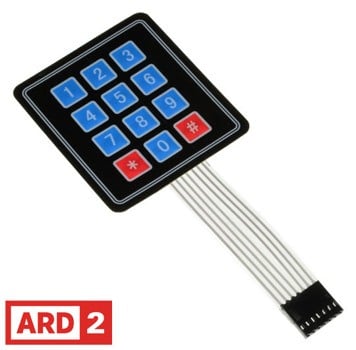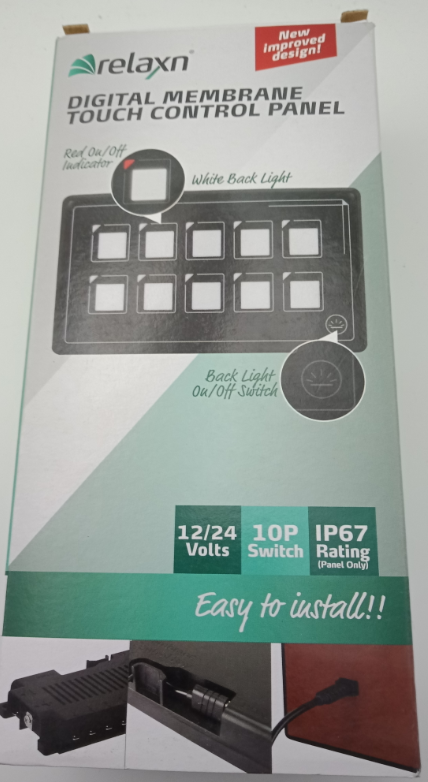A Comprehensive Guide to Membrane Switch Design and Manufacturing
The Advantages of Utilizing Membrane Switches Over in Consumer Electronic Devices
Membrane switches are increasingly identified for their substantial advantages in consumer electronics, particularly in improving customer interaction and enhancing manufacturing processes. The versatility in design allows for customized services that fulfill varied consumer requirements.
Boosted Individual Experience
In today's competitive landscape of consumer electronic devices, boosted customer experience is critical; almost 85% of customers prioritize intuitive interfaces. Membrane layer switches play an essential function in attaining this level of use.
The responsive responses given by membrane switches is vital for leading user actions, making sure that commands are registered precisely. This comments mechanism reduces mistakes and increases user contentment, promoting a favorable partnership between the gadget and the customer. The customizable nature of membrane layer switches allows producers to customize interfaces to particular customer needs, making tools a lot more obtainable and welcoming.
Additionally, membrane switches can integrate backlighting and graphic overlays, even more improving visibility and usability in diverse environments. This versatility makes certain that gadgets remain easy to use and practical, despite the setting. Generally, the assimilation of membrane layer changes into consumer electronic devices significantly boosts user experience, driving brand name commitment and complete satisfaction in a progressively affordable market.
Cost-efficient Production
Consumer electronics producers are regularly looking for means to stabilize quality with affordability, and membrane layer buttons provide a compelling remedy for cost-effective manufacturing. membrane switch. These parts are naturally simpler than conventional mechanical switches, which decreases both manufacturing costs and complexity. The lightweight style of membrane changes enables reduced shipping costs and much easier integration right into portable devices, additionally enhancing their allure in an open market

Suppliers can produce membrane buttons in high quantities, capitalizing on economic climates of range. This mass production capability makes certain consistent top quality while substantially decreasing per-unit expenses. Furthermore, the products made use of in membrane buttons, such as polyester and polycarbonate, are usually cheaper than those required for conventional switch innovations, adding to total expense savings.
The production procedure for membrane changes typically requires less actions and less labor compared to other switch kinds. This streamlined strategy not only reduces labor costs but also speeds up time-to-market, enabling business to respond promptly to consumer demand. Subsequently, the mix of decreased material expenditures and effective manufacturing processes placements membrane changes as a wise investment for makers aiming to provide premium customer electronics at affordable rate points.
Style Flexibility and Customization
While standard mechanical buttons usually enforce restrictions on design because of their bulk and called for mounting systems, membrane buttons provide unrivaled versatility and personalization alternatives for customer electronics. This innovative modern technology enables developers to create sleek, low-profile interfaces that can seamlessly integrate into different item appearances, from smartphones to kitchen appliances.
Membrane layer switches can be produced in practically any type of form or dimension, making it possible for makers to tailor the design to details ergonomic and functional needs. This adaptability not only enhances customer experience but also allows for imaginative styles that align with brand identity. Additionally, making use of published graphics on membrane layer switches provides the opportunity for detailed designs and vivid shades, which can be quickly changed without substantial cost implications.
Additionally, membrane layer switches can include several performances right into a solitary layer, lowering the requirement for several parts and streamlining setting up processes. This structured style strategy reduces room and weight, making it optimal for small customer electronic devices. On the whole, the design adaptability and personalization capabilities of membrane switches encourage producers to introduce, eventually leading to even more user-friendly and engaging items.
Resilience and Reliability
As innovation remains to progress, the longevity and dependability of membrane layer switches have actually become vital factors to consider for producers in the consumer electronic devices industry. Membrane switches are developed to endure harsh ecological problems, consisting of temperature level fluctuations, moisture, and dirt exposure. Their durable building often includes multi-layered products that give an effective barrier versus pollutants, making certain longevity and consistent why not try these out performance.
In addition to environmental resistance, membrane switches offer premium mechanical dependability. Unlike typical mechanical buttons, which may wear out gradually, membrane layer switches use a you can try this out sealed design that decreases the risk of mechanical failure. The lack of moving components not just boosts their lifespan but additionally decreases deterioration, making them optimal for high-usage applications.
Additionally, membrane switches can endure a substantial number of actuations without loss of functionality, usually surpassing numerous cycles (membrane switch). This durability translates to lower replacement costs and minimized downtime for customers and manufacturers alike. Generally, the mix of ecological resilience and mechanical integrity makes membrane switches a calculated choice for consumer electronic devices, ensuring that tools continue to be efficient and operational throughout their designated life-span

Streamlined Product Advancement
The longevity and reliability of membrane switches over substantially contribute to streamlined product growth in the consumer electronics industry. By integrating these buttons early in the layout procedure, suppliers can reduce the intricacy and number of parts needed in their products. Membrane layer continue reading this buttons are lightweight and small, enabling for a lot more effective space application within gadgets, which can bring about streamlined setting up processes.

The simplicity of manufacturing membrane switches also plays an essential duty in product development. With modern printing strategies and materials, manufacturing can be scaled successfully, reducing and minimizing lead times waste. This causes reduced production costs, improving general earnings.

Verdict
In verdict, membrane layer changes considerably improve consumer electronics by providing an enhanced customer experience, cost-efficient production procedures, and flexible design alternatives. The assimilation of membrane layer changes represents a calculated selection for suppliers looking for to optimize item design and performance.
Membrane switches are significantly identified for their significant advantages in customer electronic devices, particularly in enhancing user communication and enhancing production procedures. Furthermore, the products made use of in membrane layer buttons, such as polyester and polycarbonate, are frequently less expensive than those needed for traditional button innovations, adding to general expense savings.
The production procedure for membrane layer switches over commonly calls for fewer actions and less labor contrasted to other button kinds. Unlike conventional mechanical buttons, which may use out over time, membrane layer switches over utilize a sealed design that minimizes the risk of mechanical failing.In final thought, membrane changes considerably enhance customer electronics by providing an improved customer experience, cost-efficient production processes, and functional design choices.